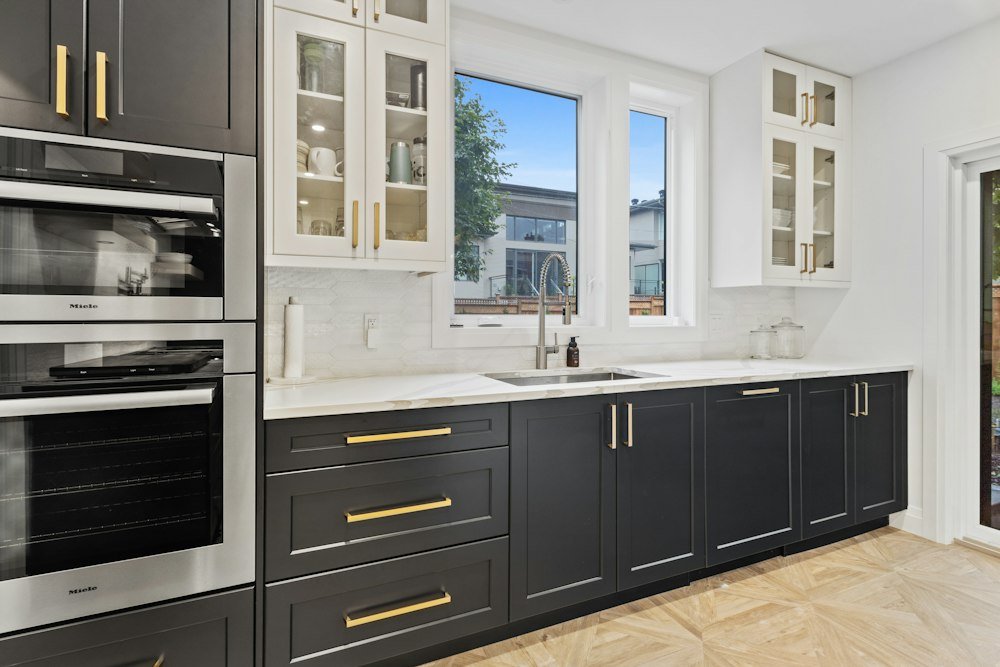
From Design to Installation: A Comprehensive Guide to Kitchen Cabinet Renovation
Renovating your kitchen cabinets Toronto is a transformative project that can elevate your space’s aesthetics and functionality. Whether you’re aiming for a modern look or timeless charm, understanding the steps from design to installation ensures a seamless process. Here’s a comprehensive guide to help you navigate your kitchen cabinet renovation journey.
Step 1: Assess Your Needs and Goals
Before diving into design details, take time to evaluate your needs and goals:
- Storage Requirements: Consider how much storage you need and the types of items you’ll store.
- Aesthetic Preferences: Identify your preferred style, whether it’s sleek and modern, rustic, or traditional.
- Budget: Establish a realistic budget, keeping in mind materials, labor, and additional costs.
- Functionality: Think about features like soft-close drawers, pull-out shelves, or built-in organizers.
Step 2: Explore Cabinet Styles and Materials
Cabinet style and material significantly influence the overall look and durability of your kitchen:
- Styles:
- Shaker: Clean lines and simplicity.
- Flat-Panel: Sleek and modern.
- Inset: Classic and tailored.
- Glass-Front: Adds a decorative touch and showcases dishes.
- Materials:
- Solid Wood: Durable and versatile.
- Plywood: Strong and moisture-resistant.
- Medium-Density Fiberboard (MDF): Smooth and cost-effective.
- Laminate: Affordable and easy to clean.
Step 3: Plan the Layout
The layout of your cabinets impacts the kitchen’s functionality. Common layouts include:
- L-Shaped: Ideal for open spaces and efficient workflows.
- U-Shaped: Provides ample storage and workspace.
- Galley: Compact and perfect for smaller kitchens.
- Island: Adds extra storage and prep space in larger kitchens.
Step 4: Work with a Designer or Architect
A professional designer or architect can bring your vision to life while optimizing space and functionality. They’ll help:
- Develop detailed plans and 3D renderings.
- Choose materials and finishes.
- Ensure your design adheres to building codes.
Step 5: Select Hardware and Finishes
The right hardware and finishes enhance your cabinets’ appearance and functionality:
- Handles and Knobs: Choose styles that complement your overall design.
- Hinges: Opt for concealed or decorative options.
- Finishes:
- Painted: Offers a clean, smooth look.
- Stained: Highlights natural wood grain.
- Glazed: Adds depth and texture.
Step 6: Hire a Reliable Contractor
A skilled contractor ensures your cabinets are installed correctly and on schedule. When selecting a contractor:
- Check references and reviews.
- Verify licensing and insurance.
- Review their portfolio for similar projects.
- Obtain a detailed quote and timeline.
Step 7: Prepare Your Kitchen
Before installation begins, prepare your space:
- Clear out the existing cabinets.
- Protect floors and countertops with drop cloths.
- Arrange a temporary kitchen setup if the renovation will take several days.
Step 8: Installation Process
The installation phase involves several steps:
- Demolition: Remove old cabinets while minimizing damage to walls and floors.
- Wall Preparation: Repair or reinforce walls to support new cabinets.
- Base Cabinet Installation: Install base cabinets first, ensuring they are level and securely fastened.
- Upper Cabinet Installation: Mount upper cabinets, starting at the corners and working outward.
- Hardware Installation: Attach handles, knobs, and other hardware.
Step 9: Add the Finishing Touches
The final touches make your cabinets truly stand out:
- Lighting: Under-cabinet lighting enhances functionality and ambiance.
- Backsplashes: Coordinate your backsplash with the cabinet style.
- Decorative Elements: Add crown molding or trim for a polished look.
Step 10: Maintenance and Care
Proper maintenance ensures your cabinets stay beautiful and functional for years:
- Regular Cleaning: Use mild soap and water to clean surfaces.
- Avoid Harsh Chemicals: Prevent damage by steering clear of abrasive cleaners.
- Inspect Hardware: Tighten loose screws and lubricate hinges as needed.
Tips for a Successful Renovation
- Plan Ahead: Allow sufficient time for design, material selection, and installation.
- Communicate Clearly: Maintain open communication with your contractor and designer.
- Stay Flexible: Be prepared for unexpected delays or adjustments.
- Focus on Quality: Invest in durable materials and skilled craftsmanship.
Conclusion
A kitchen cabinet renovation is a rewarding project that transforms your space into a functional and stylish hub. By carefully planning each step—from design to installation—you can create a kitchen that reflects your personality and meets your needs. Whether you’re tackling the project yourself or hiring professionals, this guide provides the roadmap to a successful renovation.


